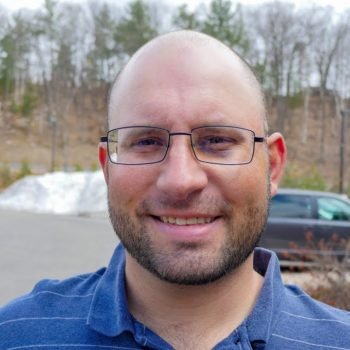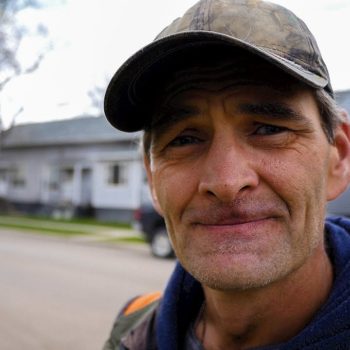In the United States, homelessness is most typically thought of as an urban problem. An issue that challenges cities while graciously leaving those living in suburban and rural communities free from its effects.
Unfortunately, the reality is that, while homelessness may be more visible in America’s urban population centers, its prevalence continues to rise in its underdeveloped rural communities.
There are several key reasons why homelessness in rural America is often described as “hidden.” While officially as many as 10% of the United States homeless population lives in rural areas, the true number, like that of homelessness across the nation in general, is probably much higher than reported.
Rural homelessness is being driven by the economics of opportunity, which have made it incredibly challenging for these communities to contain housing costs while continuing to create a fertile environment for thriving businesses to grow. Policymakers have been unable to strike the right balance.
Despite seeing their population numbers reduced as younger workers are driven to cities in search of economic opportunity, rural communities have struggled to keep up with the changing times.
Differences between cities and more rural urban communities have also contributed to the notion that homelessness in America’s countryside is largely hidden. Rural communities often lack the interlocking social systems found in larger cities.
As a result, it is exceptionally challenging to capture the true number of homeless people using the point in time count system favored by the United States Federal government.
Making Sense of Rural Homelessness
As a result, many transient homeless people living in rural areas are not captured in the data covering the domestic homeless population. Thus, they cannot be accounted for with corresponding social services.
This is compounded by the propensity of rural communities to handle social problems internally within families, religious communities and without the intrusion of government programs.
Often even when services exist, homeless individuals living in rural area are reluctant to access them for fear of spreading information within small and isolated communities of their plight.
The result is a loose network of support outside of America’s cities, which often allows the most vulnerable to fall through the cracks.
In general, researchers, have defined rural homeless people as being younger than their urban counterparts and more likely to live in two-parent families in which both parents are or were recently employed.
For many, employment is a major benefit but not enough to stave off homelessness, especially as housing prices continue to rise in opposition to wages which continue to remain stagnant if not fall as has been observed in many rural communities following the closure of large scale agricultural, industrial and commercial production facilities.
For many of rural homeless people, because medical care is so spread out when compared to urban areas, routine and preventative care is especially under used. This leads to excessively high prevalence of chronic diseases as well as instances of malnutrition, oral diseases and problems related to healthy hygiene and sanitation.
Traditional Homeless People
Traditional homeless people in rural areas are very similar to those you might find in America’s cities. They are often homeless as a result of suffering personal tragedies, mental illness, drug addiction, disabilities and difficulty accessing the opportunities withheld from far too many of our citizens.
They may have a great deal of difficulty securing gainful employment and quite often lack a stable and permanent address, another barrier which often makes it challenging to advance in a career.
Though women are absolutely among traditional homeless people in rural communities, single men predominate in this demographic.
Newly Poor
Driven by the economic collapse of rural communities, newly poor people are the fastest growing segment of the rural homeless population. They are officially classified by the government as the working poor or near poor and are very likely to be two-parent families with children.
It is typical for this segment to hold part- or full-time jobs though they are very likely to be struggling to earn enough money to afford rent in the communities in which they grew up or currently find themselves in.
Newly poor people continue to grow as a result of economic problems which continue to remove opportunities from rural communities.
Many newly poor people live out of cars, camp and stay with friends or families as they seek opportunities to help get them back into stable employment and housing.
Mentally Ill Individuals
Mentally ill individuals tend to be found closer to large rural communities and near the location of state mental hospitals.
As communities have shifted toward more community based mental health services, many former patients of these hospitals have found it challenging to build stable and fulfilling lives on their own.
The mentally ill rural homeless population is especially vulnerable.
In many communities, mentally ill individuals are disproportionately targeted by police. They find themselves incarcerated for issues which stem directly from the lack of mental health treatment they are receiving rather than as a result of any desire to participate in criminal activities or to be labeled a criminal.
Displaced Farmers and Farm-Related Workers
America was once a rural nation which depended on its farms to feed the nation. Globalization and overseas competition have changed this and created a new segment of rural homeless people among those who used to enjoy fruitful employment working on farms across the country.
Social workers dealing with farm families argue strongly that farmers face unique stresses as a result of foreclosure. Foreclosure represents the loss of the family home, the farmer’s job and primary social network, and the children’s inheritance. If the farm has been in the family for several generations, the guilt and self-recrimination are magnified.
When foreclosures are especially numerous in an area, banks and lending institutions often have trouble reselling the farms quickly. As a result, farm families are often permitted to remain as caretakers on a day-to-day basis with eviction quickly following the final sale of the property. From the point of foreclosure, farmers in this unstable and transient position are essentially homeless under our definition.
This group also includes migrant and seasonal farm workers whose housing, health care, and social service needs have never been adequately met by the existing delivery systems, even in the best of times.
Hermits
Many rural homeless people are individuals who sought refuge in America’s wilderness.
Former combat veterans, survivalists and people belonging to any number of alternative lifestyle communities may find themselves homeless as a result of the difficulties found in perpetuating life away from population centers.
For many traveling rural homeless people, the difficulties of life in nature are worth the hardships endured from trying to subsist in more traditional economic means.
While this group is small when compared to the rest of rural homeless people, it is particularly resilient and often represents a key point of exchange where survival knowledge can be shared with those with less experience living outside of mainstream society.













